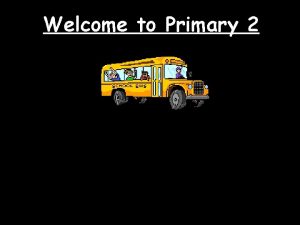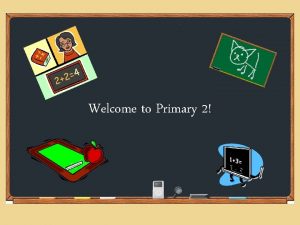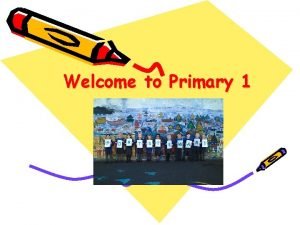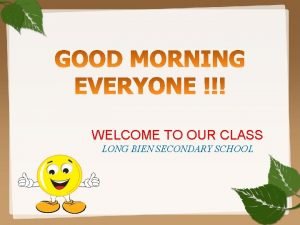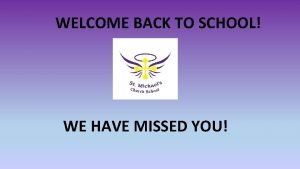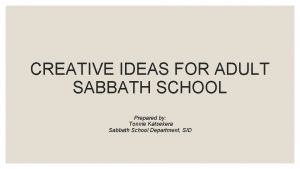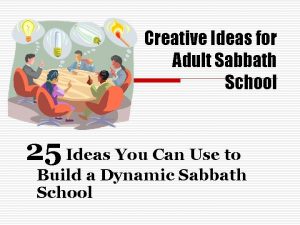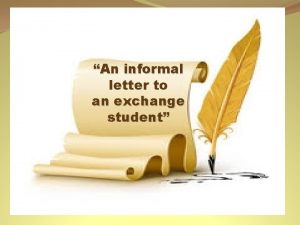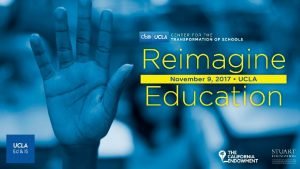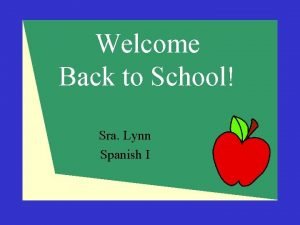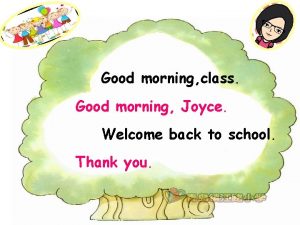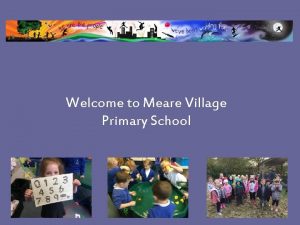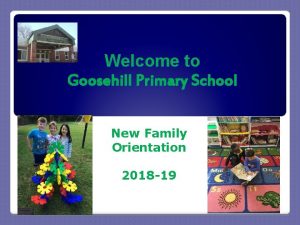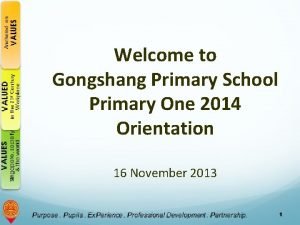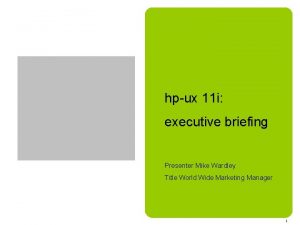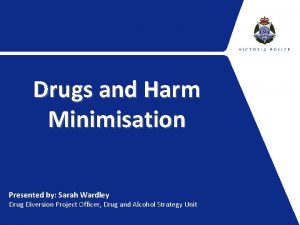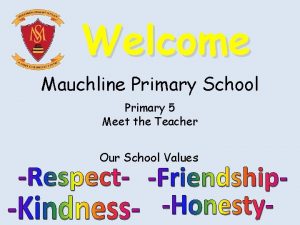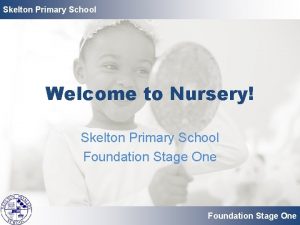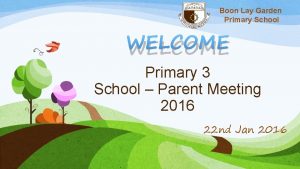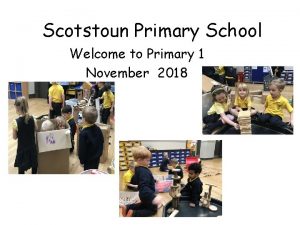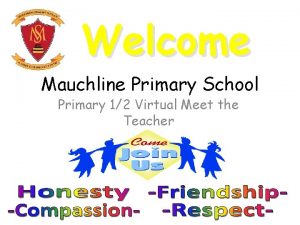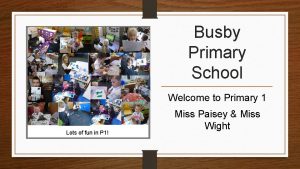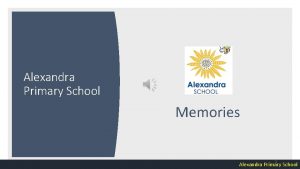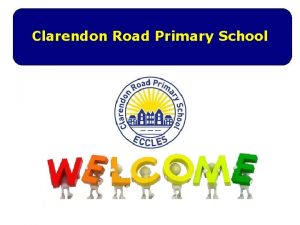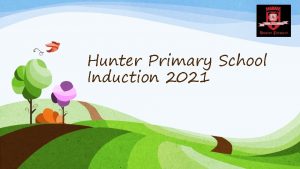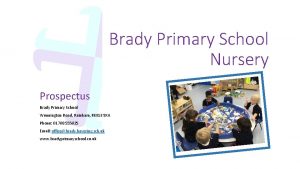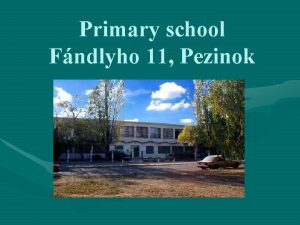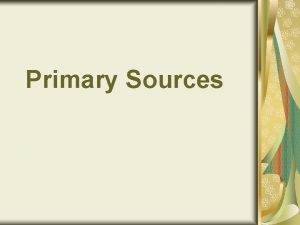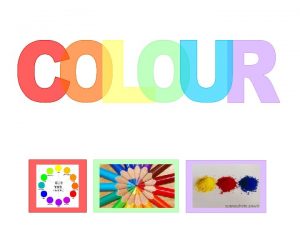Welcome to Wardley CE Primary School What this





















- Slides: 21

Welcome to Wardley CE Primary School What this meeting will cover: Times Areas of learning Reading at home Questions

Staff in Reception • Mrs Flanagan – Class Teacher, Assistant Head and EYFS Lead (maternity July 2020 – March 2021) • Miss Walsh – Class Teacher • Mrs Conlon – TA • Mrs Marshall – Communication and Language support

Times • Doors to Reception will open at 8: 40 but school does not start until 8: 50 • • Lunch time is 11. 45 – 1: 00 Home time is 3: 05, you will be able to collect your children from the reception door.

DROPPING OFF • Parents may bring children in and help them put their coats and bags on their pegs. After the first few days we ask parents to say good bye at the door and we encourage children to put away their own things. • • Crying soon stops! If you need to speak to the class teacher I will be present each morning and evening at the door.

School Dinners The school dinners are cooked on site. The menu is set out at the start of the term and is based on what the children ate in Nursery. Packed Lunches: Children all eat at the same time. Lunch is at 11. 45 Water is provided. For the first few weeks I will be in the hall supporting the children and helping them settle, make good choices and eat independently. As your child is in Reception you DO NOT have to pay for school dinners at the moment…. they are free!

Fruit and Water The children are provided with fruit and we have this in the morning. Children are also allowed to bring in a bottle of water. But please label your child's bottle!

• Areas of learning There are 7 areas of learning within the EYFS, these are: CORE: These are time specific 1. 2. 3. Personal, Social and Emotional Development Communication and Language Physical Development SPECIFIC 4. Maths 5. Literacy 6. Understanding the World 7. Expressive Arts and Design • • Over the year we will gather evidence which will form a profile of your child’s learning journey. What can you do at home? Talk to your child about their day, complete homework that is sent.

Speech and Language • During the year Wardley Primary has the exciting opportunity to work with a range of specialist Speech and Language experts in Reception. Teeth • Incorrect positioning of teeth so that the bottom and top teeth at the front don't meet properly. Tooth decay (especially the front teeth) if the dummy is dipped into sweet things. Speech and language problems: • Your child may not use the full range of tongue movements that are necessary for making all the speech sounds. Your child has fewer opportunities to babble and use sounds to communicate with you.

Reading at home • At Wardley we are ‘big’ on reading! Reading unlocks the curriculum and one of our aims here in the EYFS is to get every child to read.

Reading at home • Your child will have the opportunity to change their reading books twice a week. • In addition to the above children will have a ‘green words’ which will be sent home and changed regularly in accordance with their ability.

Read Write Inc • Read Write Inc is a Phonics programme that provides lively and structured lessons. • The programme was devised so that no child would slip through the net.

ELG: Children use their phonic knowledge to write words in ways which match their spoken sounds. They also write some irregular common words. They write simple sentences which can be read by themselves and others. Some words are spelt correctly and others are phonetically plausible.

Mathematics • • What will Maths look like in Reception? Hands on, challenging and most importantly fun! Children learn when given daily bursts and bite size lessons. What can you do at home? Challenges: Ask your child to find 3 crayons then say go and find 1 more. Explain that now you have 4 altogether and count with child.

Numicon Multi-sensory tool that develops fluency by using a visual, practical base to develop conceptual understanding and fluent recall. Helps children to reason mathematically through the use of concrete objects and spoken language to explain and justify. Develops children into confident problem-solvers

ELG: Children count reliably with numbers from 1 to 20, place them in order and say which number is one more or one less than a given number. Using quantities and objects, they add and subtract two single-digit numbers and count on or back to find the answer. They solve problems, including doubling, halving and sharing.

Going outdoors Outdoor learning is very important because it; 1. 2. 3. 4. Supports development by offering children physical activity, freedom and movement. Provides opportunities for children to create positive relationships through negotiation and turn taking. Provides safe and supervised new experiences which require imagination and resourcefulness. Gives children contact with nature!

A typical day in Reception • • • Doors to reception will open at 8: 40, children will complete self registration and begin activities. For the first few days you will be able to settle your child in the classroom. 9: 00 – 10: 00 RWI and Literacy 10. 00 – 10. 15 Snack 10: 15 – 11: 20 Maths 11: 45 Lunch and interventions 1: 00 – 3: 05 – Continuous (adult led) provision for the remaining areas of learning.

How can you help your child to prepare for September? • Encourage independent dressing and undressing. • Talk to them about Reception explain about all the fun and exciting activities they will be doing. • Share tidying up with them. • Ask us if you have any concerns or questions, we are here to help!

Uniform and accessories • Easy to manage clothes such as; school pants and elasticated skirts. • Easy to manage coat. • P. E kit; white t-shirt, black shorts and black pumps. • Reading book bag • Water bottle • Please label all items!!

The school’s attendance target is 96. 1% There are 175 days a year when the children are not in school. . . This is time for family time, friends, visits, holidays, shopping, appointments. . which leaves… 190 School days in each year 100% 10 days absence 180 days of Education 95% Great 19 days absence 171 days of Education 90% Worryi ng Best chance of success Gets your child off to Less chance of success a flying start Makes it harder for your child to make 29 days absence 161 days of Education 85% 38 days absence 152 days of Education 80% 47 days absence 143 days of Education 75% Serious Concern Far more impact on your child and their chances of success.

Thank you for coming tonight! Questions?
 Wise men three clever are we
Wise men three clever are we Japan kindergarten hat
Japan kindergarten hat Welcome to primary 2
Welcome to primary 2 Welcome to primary 2
Welcome to primary 2 Welcome to primary 1
Welcome to primary 1 The primary pigment colors are ____.
The primary pigment colors are ____. Welcome to secondary school
Welcome to secondary school Welcome back we missed you
Welcome back we missed you Sabbath school programs for superintendent
Sabbath school programs for superintendent Sabbath school monthly themes
Sabbath school monthly themes How to write an exchange student letter
How to write an exchange student letter Welcome to your senior year of high school
Welcome to your senior year of high school Sabbath school welcome
Sabbath school welcome Horace mann ucla community school
Horace mann ucla community school Welcome back to school in spanish
Welcome back to school in spanish Good morning welcome back to school
Good morning welcome back to school Yan oi tong tin ka ping secondary school
Yan oi tong tin ka ping secondary school Woodford green primary school
Woodford green primary school Vredekloof primary school fees
Vredekloof primary school fees Meare village primary school
Meare village primary school Goosehill primary school
Goosehill primary school Poh qinyu principal
Poh qinyu principal


